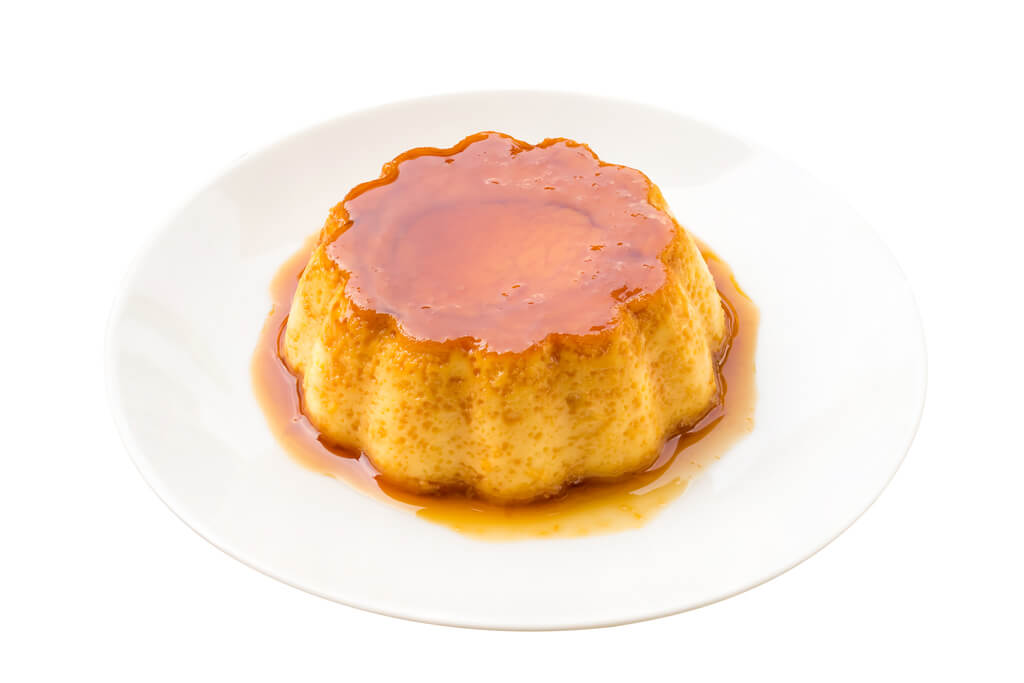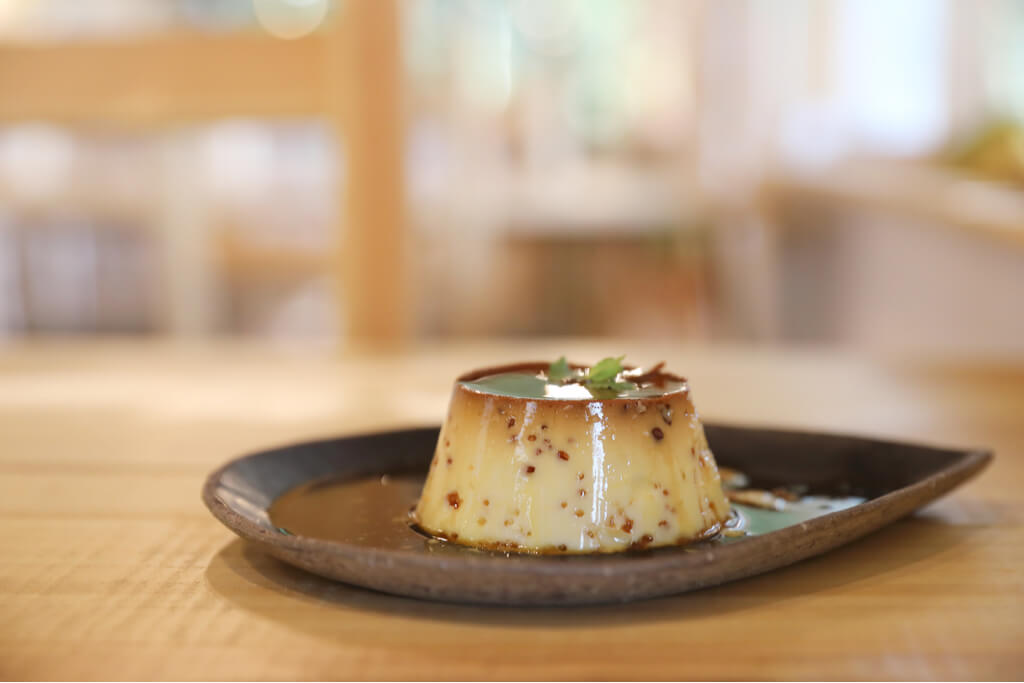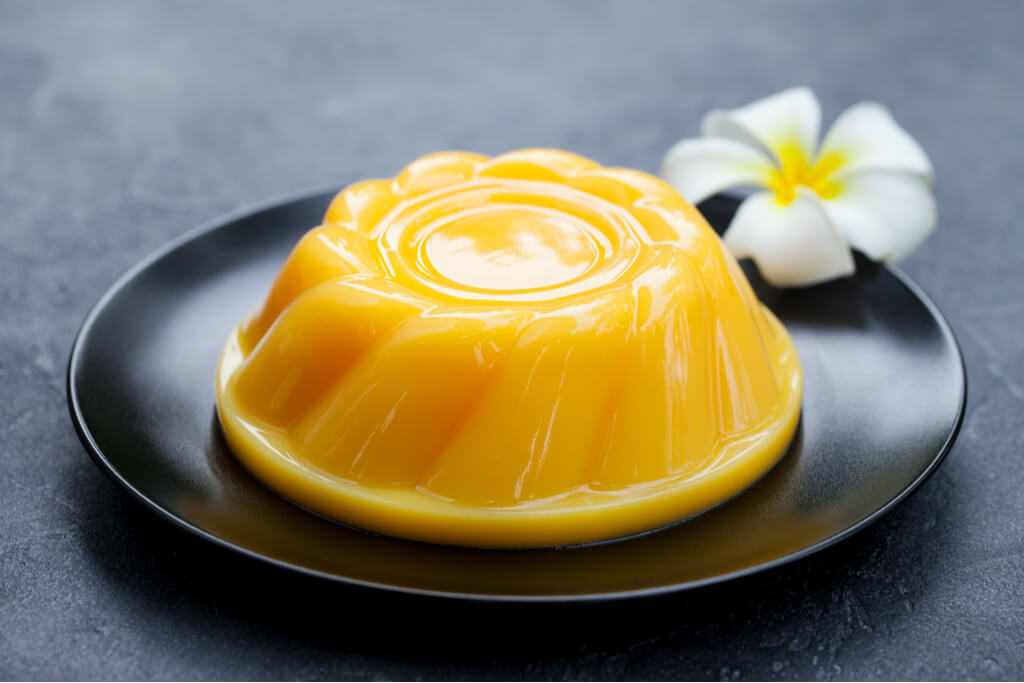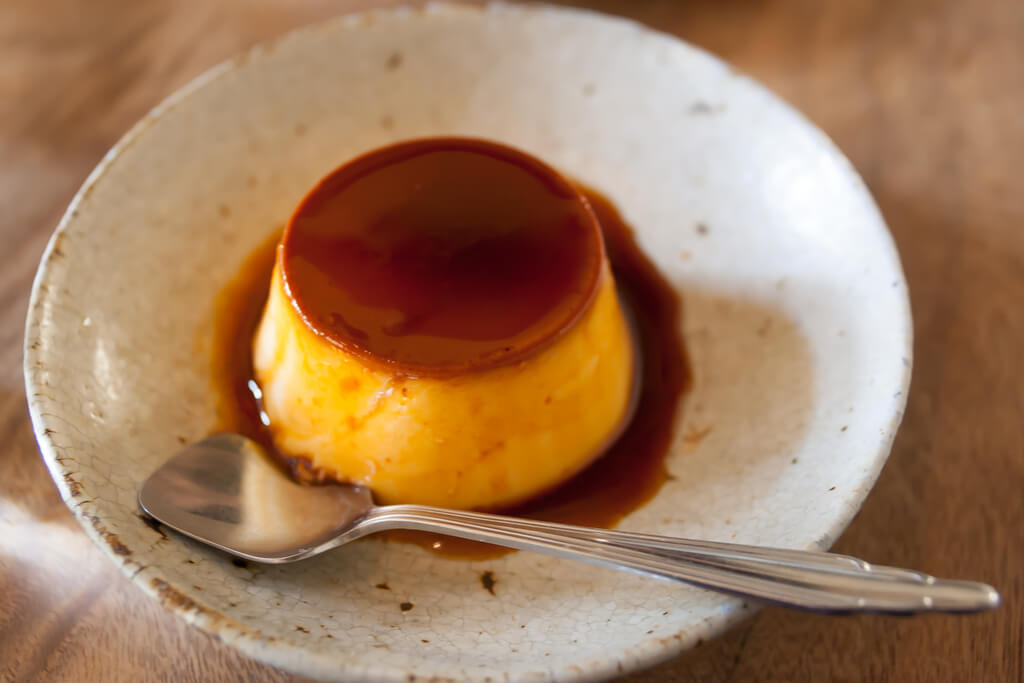Purin, or custard pudding, combines a slightly bitter caramel sauce with a sweet custard pudding (its consistency ranges from firm to a jelly-like wobble). Best served cold, purin is reminiscent of a crème caramel or flan and originates in the Meiji era. However, it was only with the arrival of pre-mixed powders in the 1960s and a boom in milk consumption that purin became a more accessible dessert.
Table of Contents
ToggleHow did Japanese pudding become popular?
Pre-mixed powders were followed by ready-made purin, which included the launch of Glico’s rich, flavorful Pucchin Pudding in 1972. Eventually, Pucchin Pudding became one of the top-selling purin brands. It’s known for its clever packaging and the distinctive sound it makes. The pudding emerges from its container when you flick back a small tab. According to the Glico website, this is one of the reasons the caramel custard pudding was, and remains, so popular almost 50 years later. In 2020, McDonalds even released a limited-edition Pucchin Pudding McShake in collaboration with the brand.

Discover Japanese Pudding
If you’re keen to try and make purin at home, many easy-to-follow recipes are also available online. In general, purin is a combination of milk, eggs, sugar, and vanilla. You can make this custard dessert in more than one way.
You can opt for the popular oven-baked version (yaki-purin), which requires filling pudding molds with the mixture and using a water bath (also known as a bain-marie). Similarly, you can steam the mixture (mushi-purin) in a water bath on the stove. However, you can make your purin using gelatin for an extra jiggly, jelly-like finish, as found in Glico’s Pucchin Pudding.
Interested in experiencing Japanese sweets for yourself? Sakuraco is sending curated boxes of Japanese snacks and sweets like mochi worldwide!

If you’re in Japan, you can also try numerous ready-made purin. Many are available in local convenience stores. These include Glico’s Pucchin Pudding and Morigana’s Yaki Pudding. Yaki Pudding is a baked version known for its flavorful crust. The award-winning Toraku Kobe Pudding is another must-try.
It’s a combination of eggs, cream, and citrus liqueur. It’s also an ideal souvenir to pick up when visiting Kobe. It even inspired a special Kobe Pudding KitKat flavor. Purin found in convenience stores often comes with tasty additional toppings and layers, from whipped cream to sponge cake.
Specialty Japanese Pudding
Countless exciting variations of Japanese pudding are available in specialty cafés nationwide. Many of these cafés are in Tokyo and have become famous for their purin. For example, Happy Pudding Mahakala in Nakameguro uses only the best eggs from a farm in Hyogo Prefecture for its purin pots. Toyonchi-no-Tamago in Shimokitazawa serves its signature smooth purin in a fun egg-shaped container, a nod to their focus on fresh farm eggs. Usually, at Patisserie Français Quatre, the purin with whipped cream comes in an eggshell and an egg carton.

At Colombin, you’ll find a traditional caramel sauce base variation. It’s called the Harajuku Honey Pudding and comes in a recyclable WECK jar you can reuse. Generally, it’s topped with honey sourced from beehives in Harajuku itself. Additionally, the specialty store Asakusa Silk Pudding has various pudding flavors and variations. These include Premium Silk (made using milk and cream from Hokkaido), Green Tea, Coffee, Strawberry, Melon, Cheese, Chocolate, and Black Sesame. As a result, the list of specialty pudding stores and cafés creating delicious purin varieties is endless.
A limited-edition KitKat Pudding Flavor is now available in a 12-piece mini pack. Purin extends its reach beyond the puddings in cafés and convenience stores. It makes appearances in anime and serves as the Japanese name (‘Purin’) for the adorably round Pokémon named Jigglypuff. Companies also create treats like Kabaya’s Petit Pudding chocolates, which they shape like mini caramel custard puddings.
Japanese Pudding in Pop Culture
Sanrio created the much-loved golden retriever character Pompompurin in 1996. His custard-hued coat and caramel-like brown beret are well-known, not to mention his love for his Mom’s caramel puddings. As a result, he has a range of fun, purin-inspired collectibles and sweets, from Pompompurin pudding squishes to Furuta’s Pompompurin pudding-shaped gummy candies.

You can even visit a Pompompurin café when you’re next in Tokyo. The menu generally features a variety of Pompompurin-inspired sweet and savory dishes, including tasty purin, served in a round container topped with a cute chocolate beret lid, purin parfait, and custard pudding lattes.
Whether you love purin in different flavor combinations, finish it with exciting toppings, or prefer to enjoy it the traditional way, the choices for this Japanese pudding are seemingly limitless. What is your favorite thing about purin? Let us know in the comments!









